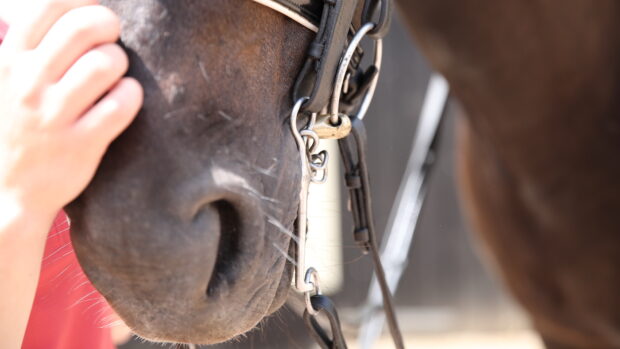Q: AT a recent team chase I saw one of the riders using what looked like a bitless bridle. Can you tell me how it works and why she uses it?
HL, Merseyside
Who uses it?
YOU saw Elisabeth Seidel who rides with the Wishful Thinkers and the Wishful Thinkers Too. Elisabeth uses the Dr Cook Bitless Bridle — also known as the crossover design — on her two horses, Silver Cloud and The Black Demon.
What horses does it suit?
“THE bridle was recommended on a team chasing website for an uncontrollable horse,” explained Lissy who, at the time, was having problems holding her open horse, The Black Demon.
“It took all my experience and strength just to hold him at home. I have ridden racehorses so I know what strong horses are like and how to hold them, but I was at my wit’s end.”
Since using the bitless bridle, Lissy feels back in control: “For the first time in our competitive career I have brakes and steering,” she said.
“He’s still very strong, but controllable. But it seems to be beneficial for all types of horses.”
How does it work?
LISSY said it feels just the same as riding with a regular bridle: “I school on the flat and it gives you a similar feel and connection as a bit.
“No matter how kind the rider’s hand or bit, there is potential for damage to the sensitive bars and tongue,” explained Lissy.
“The bridle distributes pressure over the nose, poll, sides of the face and lower jaw. It is described by the designer, Dr Robert Cook, as ‘having the horse in a benign headlock’. Directions are given by pushing the head rather than pulling and horses generally respond better to that.”
Where can I get one?
Price around £98 for the leather version www.bitlessbridle.co.uk
This Q&A was first published in Horse & Hound (19 June, ’08)


